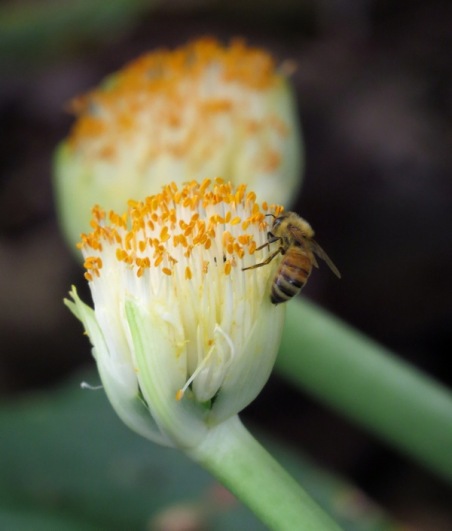For me, flowering bulbs are a sure sign spring is here but over the years it’s been my pleasure to meet bulbs that flower at other times of the year – Haemanthus albiflos (white) and Haemanthus rotundifolius (red) are autumn-flowering bulbs, while Haemanthus coccineus (red) is late-summer flowering.
My planting of H. albiflos has clumped up nicely and this year has produced myriad flowers without the aid of any extra summer watering through our long, dry period, thanks to the bulb being native to arid parts of South Africa. The plants like to be left undisturbed and the biggest problem I have is snails snacking on the broad, strappy leaves. Read more about cultivation here.

Haemanthus albiflos. Photo: Sandra Simpson
To my mind, the flowers are a little ho-hum when viewed individually, but do look good en masse. H. albiflos likes a bit of shade (similar to clivia), which makes it a useful plant for a woodland-type garden or under large trees. However, the Pacific Bulb Society entry notes it can be grown in full sun and although the leaves will suffer, the flowering doesn’t!
H. albiflos, or white paintbrush, is evergreen so an unusual member of this family as most Haemanthus don’t have leaves and flowers at the same time.

Haemanthus coccineus. Photo: Sandra Simpson
I bought a single H. coccineus bulb, planted it in a pot (so I wouldn’t lose it) and waited to see what would happen – this bulb flowers in late summer (March for me) and has its bloom first. Once the stem has died back, two wide leaves appear.
Also known as blood lily, paintbrush lily or elephant’s ears, the flower is apparently prompted by a spell of summer rain (or watering). The leaves will apparently last through until late spring-early summer. Read more about its cultivation here.
See some great photos of H. coccineus at this website – the author enthuses about the spotted stem almost as much as about the flower!







